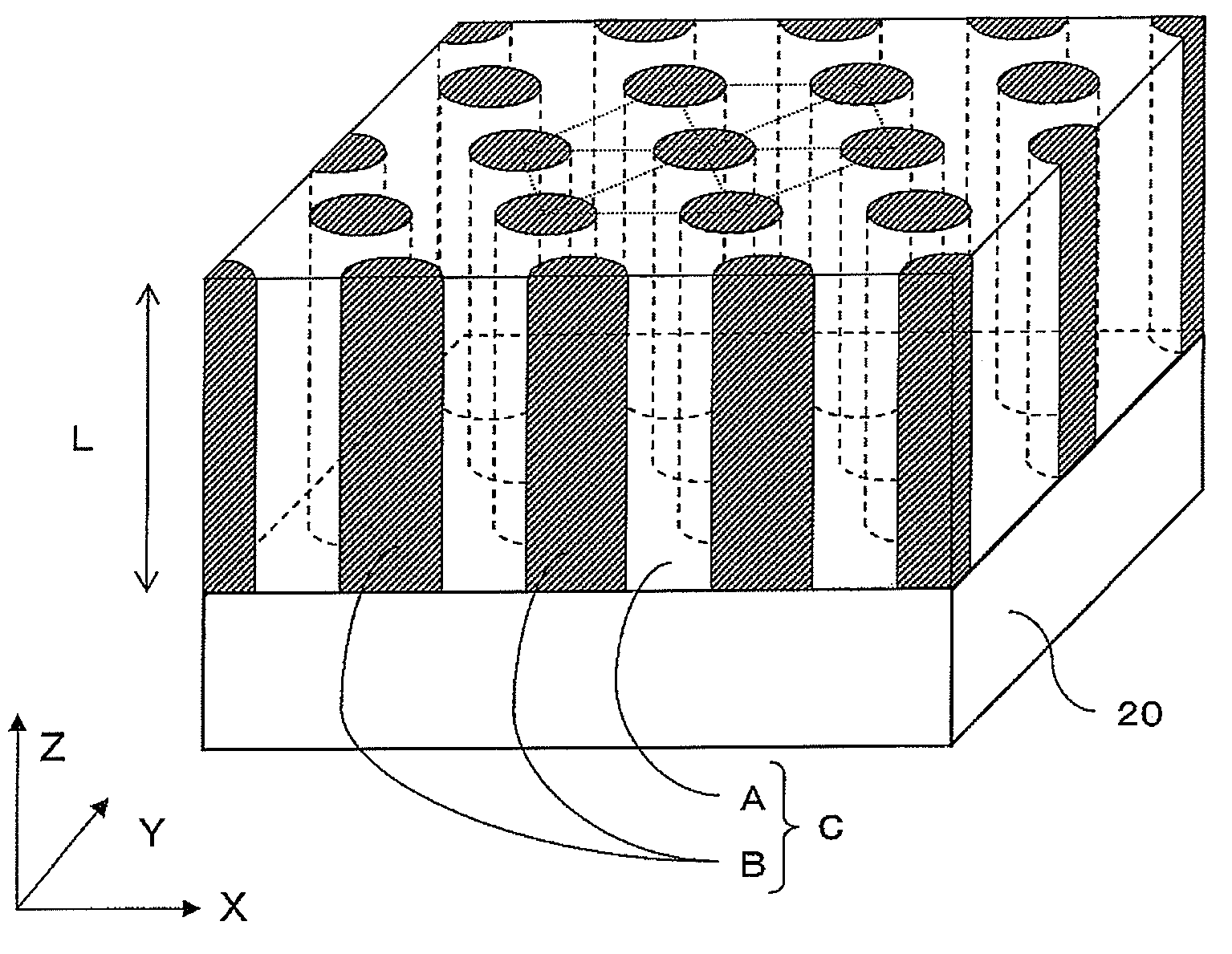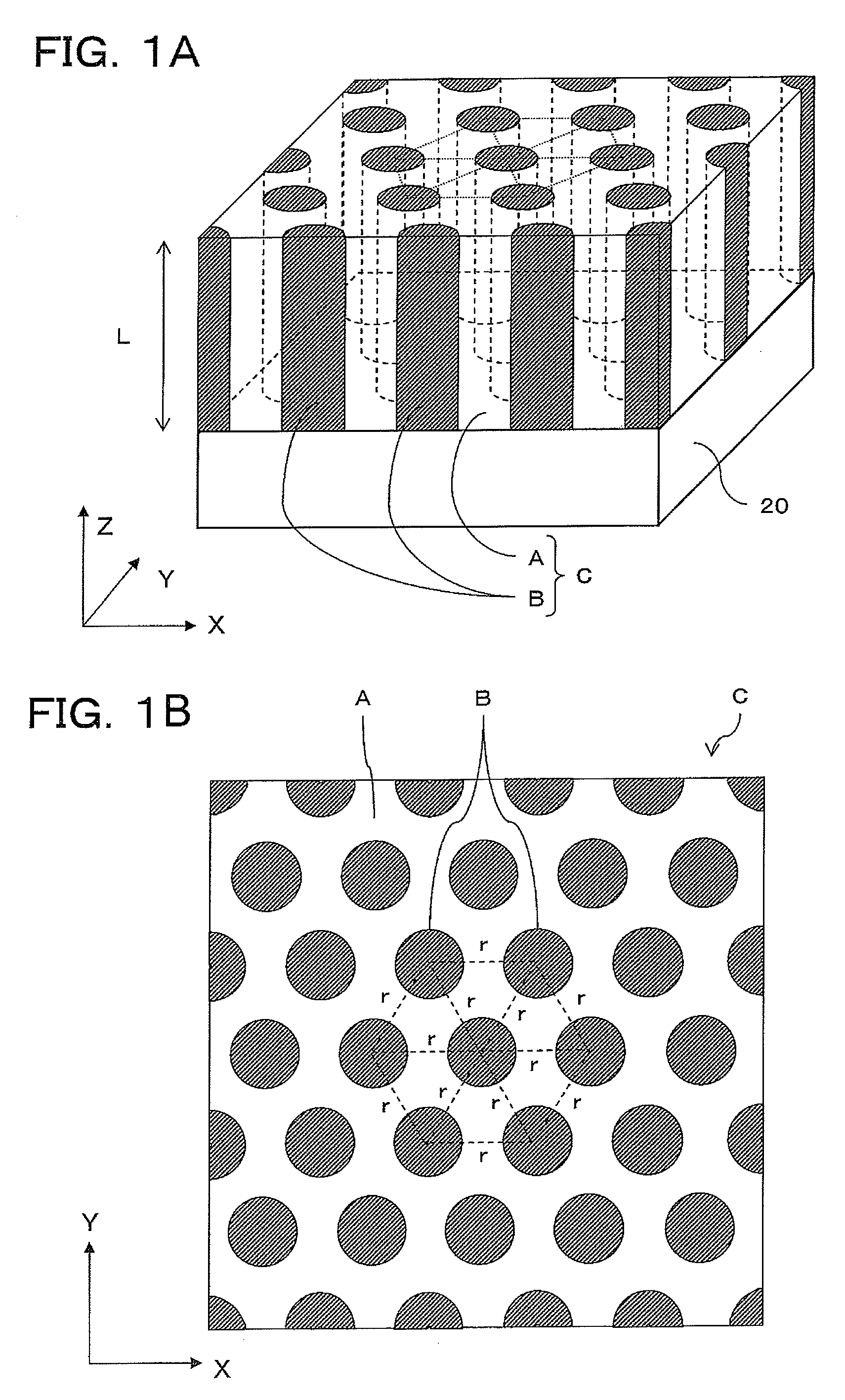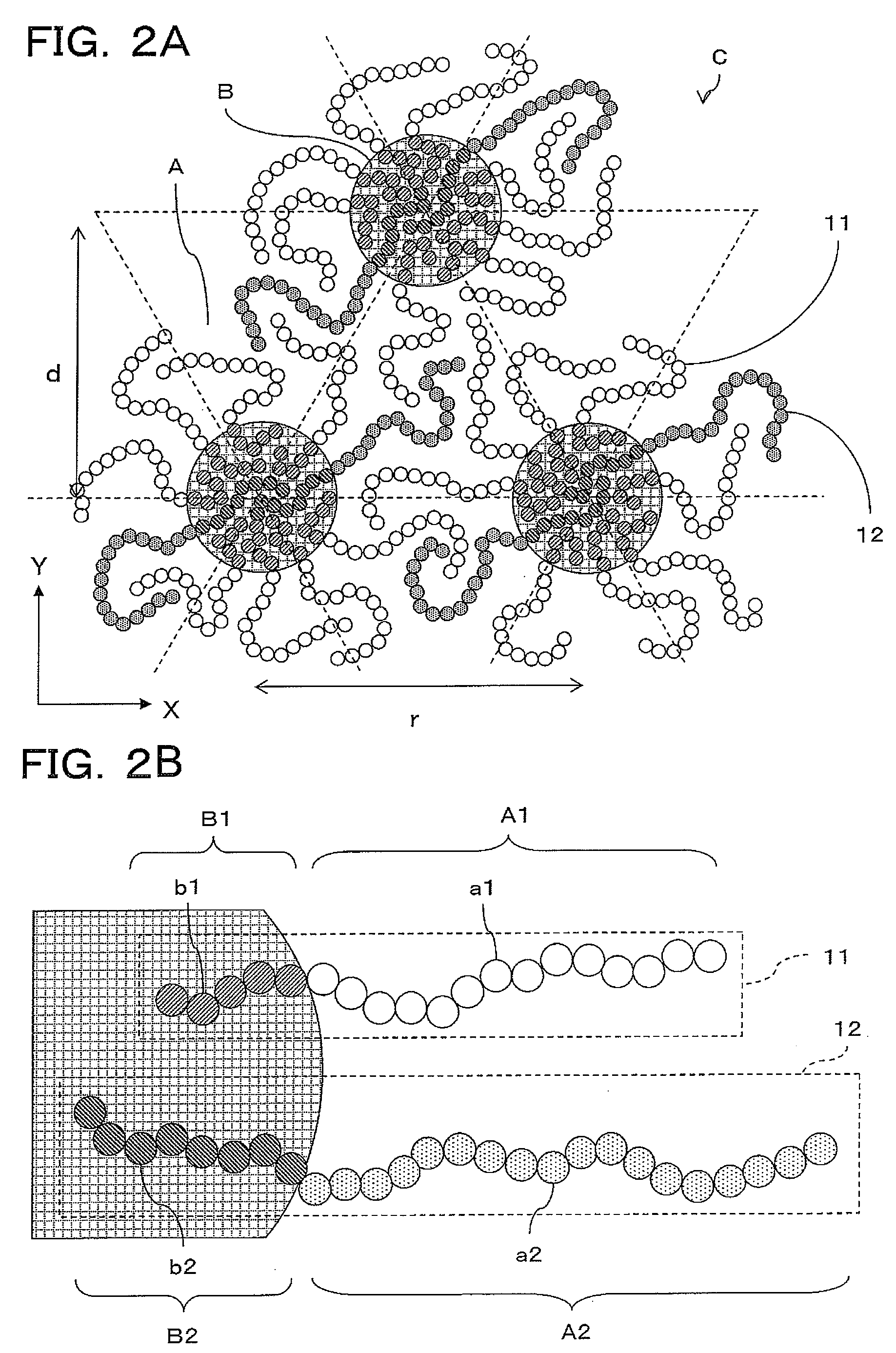Polymer Thin Film, Patterned Substrate, Patterned Medium for Magnetic Recording, and Method of Manufacturing these Articles
- Summary
- Abstract
- Description
- Claims
- Application Information
AI Technical Summary
Benefits of technology
Problems solved by technology
Method used
Image
Examples
example 1
[0136]In Example 1, the polymer thin film C having a structure in which the cylindrical phases B made of a polymethylmethacrylate (PMMA) were arrayed in the continuous phase A made of a polystyrene (PS), was formed on the substrate 20 (see FIG. 1A and FIG. 1B).
[0137]The first and second block copolymers 11,12 (see FIG. 2B as needed) constituted a mixed system composed of two types of diblock copolymers (PS-b-PMMA). The two PS-b-PMMAs were both composed of PS and PMMA as monomers having different molecular weights.
[0138]More specifically, a first PS-b-PMMA had number average molecular weights Mn of the PS block chains and the PMMA block chains of 35,500 and 12,200, respectively. A molecular weight distribution of the entire first PS-b-PMMA Mw / Mn was 1.04.
[0139]A second PS-b-PMMA had the number average molecular weights Mn of the PS block chains and the PMMA block chains of 46,000 and 21,000, respectively. The molecular weight distribution Mw / Mn of the entire second PS-b-PMMA was 1.09...
example 2
[0174]Example 2 was conducted to examine an effect of a mixed ratio volume (fraction) of the first PS-b-PMMA and the second PS-b-PMMA, in forming, on the substrate 20, the polymer thin film C in which the cylindrical phases B composed of PMMA were periodically arrayed in the continuous phase A composed of PS.
[0175]Example 2 used a mixed system of two block copolymers same as that in Example 1. That is, the first PS-b-PMMA had the number average molecular weights Mn of the PS block chains and the PMMA block chains of 35,500 and 12,200, respectively. The molecular weight distribution Mw / Mn of the first PS-b-PMMA was 1.04. The second PS-b-PMMA had the number average molecular weights Mn of the PS block chains and the PMMA block chains of 46,000 and 21,000, respectively. The molecular weight distribution Mw / Mn of the second PS-b-PMMA was 1.09.
[0176]The mixed system had a ratio of the number average molecular weight Mn of the PS block chains of the first PS-b-PMMA as the primary componen...
example 3
[0181]Example 3 was conducted to examine an effect of a ratio of molecular weights of the first PS-b-PMMA and the second PS-b-PMMA, in forming, on the substrate 20, the polymer thin film C in which the cylindrical phases B composed of PMMA were periodically arrayed in the continuous phase A composed of PS.
[0182]Example 3 also used a mixed system of two block copolymers. The first PS-b-PMMA as the primary component is same as that used in Example 1, and had number average molecular weights Mn of the PS block chains and the PMMA block chains of 35,500 and 12,200, respectively. The molecular weight distribution Mw / Mn of the first PS-b-PMMA was 1.04. A plurality of the second PS-b-PMMAs were used as the secondary component used having following various number average molecular weights Mn of the PS block chain and the PMMA block chain, as indicated in parentheses: PS(260,000)-b-PMMA(63,500), PS(140,000)-b-PMMA(60,000), PS(52,000)-b-PMMA(52,000), PS(46,000)-b-PMMA(21,200), and PS(12,800)-...
PUM
| Property | Measurement | Unit |
|---|---|---|
| Fraction | aaaaa | aaaaa |
| Fraction | aaaaa | aaaaa |
| Weight | aaaaa | aaaaa |
Abstract
Description
Claims
Application Information
 Login to View More
Login to View More - R&D
- Intellectual Property
- Life Sciences
- Materials
- Tech Scout
- Unparalleled Data Quality
- Higher Quality Content
- 60% Fewer Hallucinations
Browse by: Latest US Patents, China's latest patents, Technical Efficacy Thesaurus, Application Domain, Technology Topic, Popular Technical Reports.
© 2025 PatSnap. All rights reserved.Legal|Privacy policy|Modern Slavery Act Transparency Statement|Sitemap|About US| Contact US: help@patsnap.com



